Want to become a gardening expert? Look no further! In this comprehensive guide, we’ll show you how to do proper gardening and unlock your natural green thumb.
Mastering the art of gardening doesn’t have to be complicated. With a few simple tips, anyone can develop a green thumb and enjoy the benefits of growing their own plants.
Key Takeaways:
- Plan according to your climate, soil type, rainfall, and sunlight exposure.
- Choose the right plants for your garden, such as lettuce and tomatoes for beginners.
- Equip yourself with essential gardening tools like a shovel, hand trowel, bypass pruners, Hori Hori Knife, and gloves.
- Find the best spot for your plants with full sun, quality soil, and access to water.
- Improve your soil quality by adding compost or other organic matter.
Understanding Your Climate and Soil Type
Before you dive into gardening, it’s crucial to understand your climate and soil type to ensure the success of your plants. Different plants thrive in different environments, and by knowing your climate and soil type, you can choose the plants that are best suited for your garden.
A good starting point is to research your local climate and determine the average temperatures, rainfall patterns, and the number of frost-free days. This information will help you select plants that can withstand the conditions in your area. For example, if you live in a region with hot summers and limited rainfall, you may want to choose drought-tolerant plants that can survive with less water.
Soil type is another essential factor to consider. Different plants have different soil preferences, ranging from sandy to clayey or loamy. Sandy soil drains quickly but may require more frequent watering, while clayey soil retains moisture but can become compacted. Loamy soil, which is a well-balanced mix of sand, silt, and clay, is generally the best for most plants as it provides good drainage while retaining moisture and nutrients.
| Soil Type | Description | Best Plants |
|---|---|---|
| Sandy | Drains quickly, low fertility | Cacti, succulents |
| Clayey | Retains moisture, prone to compaction | Irises, daylilies |
| Loamy | Well-balanced mix, retains moisture, good drainage | Tomatoes, roses |
Understanding your climate and soil type is the foundation of successful gardening. By selecting plants that are well-suited for your environment, you’ll increase your chances of a thriving garden.
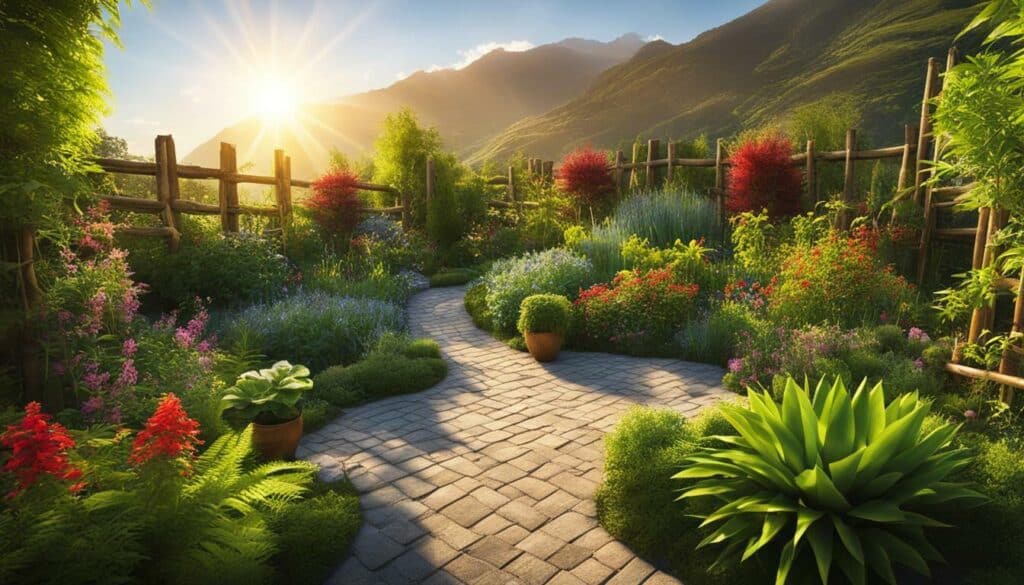
Once you have gathered this information, you can start planning your garden and selecting the plants that will thrive in your specific conditions. Taking the time to understand your climate and soil type will set you up for gardening success and help you create a beautiful and bountiful garden.
Choosing the Right Plants for Your Garden
Now that you have a better understanding of your garden’s requirements, let’s explore how to choose the perfect plants for your green oasis. When selecting plants, it is essential to consider factors such as your location, climate, and gardening goals. Whether you’re interested in growing vibrant flowers or delicious vegetables, there are options that will thrive in your garden.
For beginner gardeners, lettuce and tomatoes are excellent choices. These plants are relatively easy to grow and provide a satisfying harvest. Lettuce varieties like Romaine or Butterhead can be grown in containers or planted directly into the ground, making them versatile options for any garden. Tomatoes, on the other hand, require more space but offer a bountiful yield of juicy fruits with proper care.
When selecting plants, it’s also important to consider their maintenance requirements. Some plants may need more attention and regular pruning, while others are low-maintenance and require minimal care. Researching each plant’s specific needs will help you make informed choices and ensure a thriving garden.
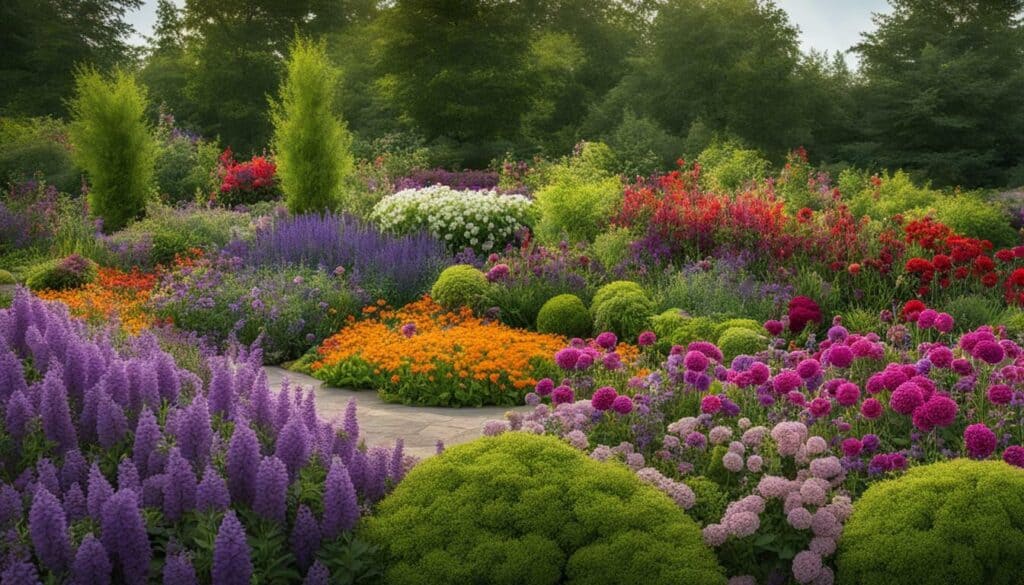
| Plant | Light Requirements | Watering | Maintenance Level |
|---|---|---|---|
| Lettuce | Partial shade | Consistent watering | Low maintenance |
| Tomatoes | Full sun | Regular watering | Moderate maintenance |
Remember to consider your personal preferences and gardening goals when choosing plants for your garden. Do you want to attract pollinators with vibrant flowers? Or are you more interested in growing your own fresh produce? By selecting plants that align with your interests, you’ll enjoy a fulfilling and rewarding gardening experience.
Essential Gardening Tools
A gardener is only as good as their tools! In this section, we’ll cover the essential gardening tools you’ll need to kickstart your gardening journey. These tools will help you cultivate, maintain, and nurture your plants, ensuring they thrive and yield beautiful flowers, fruits, and vegetables.
Shovel: Every gardener needs a reliable shovel. It’s perfect for digging holes, turning soil, and moving larger amounts of dirt or compost. Look for a sturdy shovel with a comfortable grip to make your gardening tasks easier.
Hand Trowel: A hand trowel is an essential tool for planting small plants, bulbs, or seedlings. It’s great for transplanting, removing weeds, and loosening soil in tight spaces. Choose a hand trowel with a sharp blade and a comfortable handle for precise and effortless gardening.
Bypass Pruners: Pruning is an important aspect of gardening, and a pair of bypass pruners will be your go-to tool for this task. They are perfect for trimming branches, cutting back overgrown plants, and shaping shrubs. Look for quality pruners with a sharp blade and a comfortable grip to make clean and precise cuts.
| Essential Gardening Tools | Description |
|---|---|
| Shovel | A sturdy tool for digging and turning soil. |
| Hand Trowel | Perfect for planting, transplanting, and removing weeds. |
| Bypass Pruners | Essential for trimming branches and shaping plants. |
| Hori Hori Knife | A versatile tool for digging, cutting, and measuring. |
| Gloves | Protect your hands from thorns, sharp objects, and dirt. |
Hori Hori Knife
Hori Hori Knife: This versatile tool is a gardener’s best friend. It’s perfect for digging, cutting, measuring, and even weeding. The sharp, serrated edge makes it easy to slice through roots and the pointed tip allows for precise digging. Look for a Hori Hori Knife with a high-quality stainless steel blade and a comfortable handle for long-lasting use.
Gloves: Gardening can be tough on your hands, so a pair of gloves is a must-have for protection. They shield your hands from thorns, sharp objects, and dirt while providing grip and dexterity. Look for gloves made of durable materials that fit snugly but allow for flexibility.
With these essential gardening tools, you’ll be well-equipped to begin your gardening journey. Whether you’re digging, planting, pruning, or weeding, these tools will make your tasks easier and more enjoyable. Remember to take care of your tools, keeping them clean and properly stored, so they last for many gardening seasons to come.
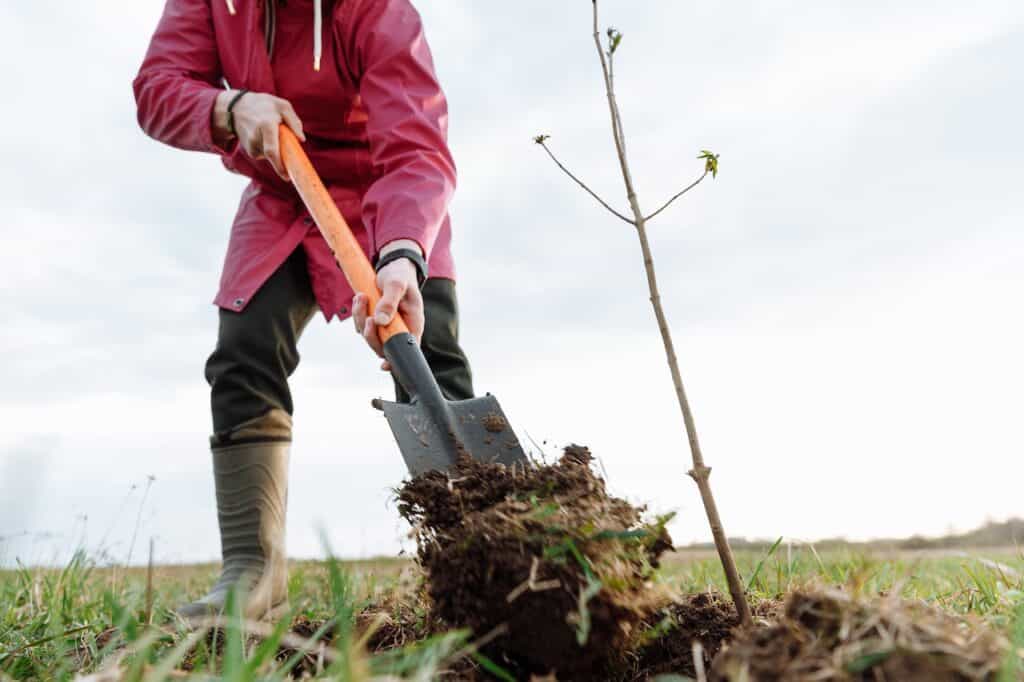
Finding the Best Spot for Your Plants
Your plants deserve the best spot in your garden! In this section, we’ll explore how to find the perfect spot for your plants to flourish. One of the key factors to consider is sunlight. Most plants require full sun to thrive, so look for an area in your garden that receives at least six hours of direct sunlight each day.
Next, assess the soil quality. Your plants will thrive in nutrient-rich soil that drains well. If you have heavy or clay soil, consider adding compost or other organic matter to improve its structure and fertility. This will ensure your plants receive the necessary nutrients and have proper drainage.
Another important factor to consider is access to water. Your plants will need regular watering, so choose a spot near a water source or invest in a convenient watering system. Additionally, make sure the area is easily accessible so you can easily tend to your plants and provide any necessary care they might need.

Gardening Tip:
“Remember, different plants have different needs. Consider grouping plants with similar water requirements together, making it easier to manage your watering schedule.”
By finding the best spot for your plants, you are setting them up for success. Take into account the amount of sunlight, soil quality, and access to water when choosing the location. Once you’ve found the perfect spot, you can watch your plants thrive and enjoy the beauty and rewards of a flourishing garden.
| Key Factors for Finding the Best Spot | Sunlight | Soil Quality | Water Access |
|---|---|---|---|
| Consideration | At least six hours of direct sunlight each day | Nutrient-rich soil that drains well | Near a water source or convenient watering system |
Improving Your Soil Quality
Healthy soil is the foundation of a thriving garden! In this section, we’ll discover how to improve your soil quality and create an ideal environment for your plants. One effective method is to add compost or other organic matter to your soil. Compost is a nutrient-rich material made from decomposed organic materials like kitchen scraps, leaves, and grass clippings. It improves soil structure, increases water retention, and provides essential nutrients to your plants.
When adding compost to your soil, spread a layer of it about 2-3 inches thick across the entire garden bed. Use a garden fork or a trowel to work the compost into the top few inches of the soil, ensuring it is evenly mixed. This will help improve drainage and aeration, allowing roots to access water and oxygen more easily. Additionally, organic matter attracts beneficial organisms like earthworms that help break down nutrients and create a healthy soil ecosystem.
Another method to improve soil quality is by using cover crops. These are plants specifically grown to cover bare soil during periods when the garden bed is not in use. Cover crops, such as clover or rye grass, help prevent erosion, suppress weeds, and add organic matter when they are turned into the soil. They also enhance soil structure by breaking up compacted soil and improving its ability to retain moisture.
Remember, every garden is different, so it’s important to assess your soil’s needs and make adjustments accordingly. By improving your soil quality, you’ll create an optimal environment for your plants to thrive and reap the rewards of a bountiful harvest.

| Benefits of Compost | Benefits of Cover Crops |
|---|---|
|
|
Fertilizing Your Plants
Just like us, plants need proper nutrition! Learn how to provide your plants with the necessary nutrients through effective fertilization in this section.
Fertilizing your plants is crucial for their growth and overall health. It helps replenish the nutrients in the soil and ensures that your plants have everything they need to thrive. When choosing a fertilizer, opt for organic gardening methods that promote sustainable and environmentally friendly practices.
A low-nitrogen, slow-release fertilizer is ideal for maintaining garden plants. It provides a steady supply of nutrients without causing excessive growth. Organic fertilizers like compost or worm castings are excellent options as they enrich the soil and improve its structure. They also release nutrients gradually, preventing any potential harm to your plants.
When applying fertilizer, follow the instructions on the packaging carefully. Over-fertilization can lead to nutrient burn, causing damage to your plants. It’s essential to strike a balance and provide the right amount of nutrients. Regularly monitoring your plants’ growth and appearance will help you determine if they require additional fertilization.
| Fertilizer Types | Pros | Cons |
|---|---|---|
| Compost | Enhances soil structure and fertility | Takes time to break down and release nutrients |
| Worm Castings | Improves soil health and nutrient content | May be more expensive than other fertilizers |
| Bone Meal | Rich in phosphorus, promotes strong root development | Can attract pests like rodents |
| Fish Emulsion | Provides a quick nutrient boost | Has a strong odor |
Remember, fertilizing is just one aspect of maintaining a healthy garden. Combine it with proper watering, soil preparation, and pest control to ensure your plants thrive. By adopting organic gardening methods and providing the right nutrition, your garden will flourish, giving you beautiful flowers, delicious vegetables, and a sense of accomplishment.
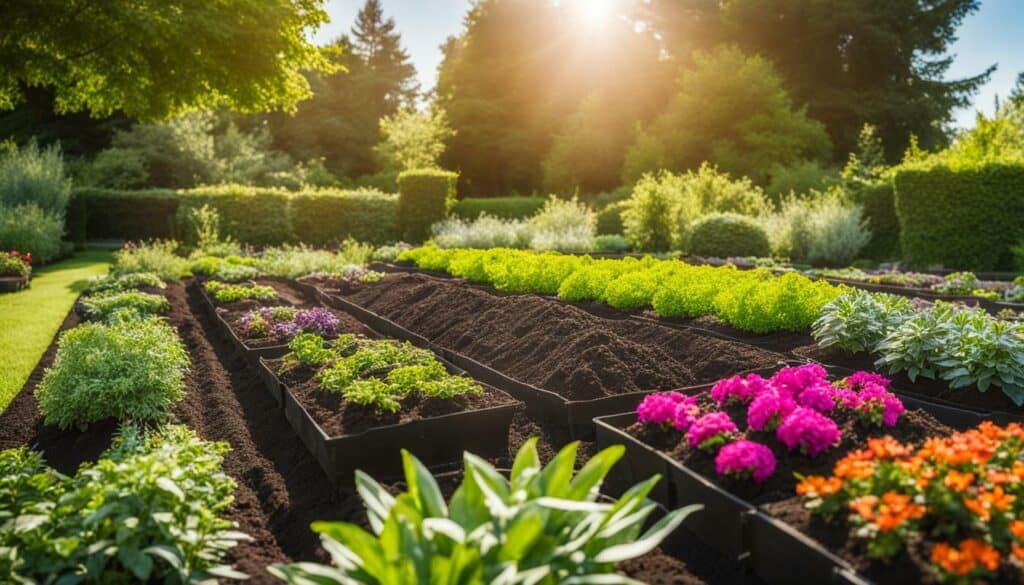
Planting and Watering Techniques
It’s time to get your hands dirty! Discover the secrets of expert planting and watering techniques in this section. Proper planting and watering are crucial for the health and growth of your plants. Let’s dive in and learn how to do it right.
Garden Planting Tips
When it comes to planting, different types of plants have different needs. Before getting started, it’s essential to research and understand the specific requirements of each plant. Consider factors like spacing, depth, and any companion plants that can benefit one another.
One common mistake beginners make is overcrowding their garden beds. It’s important to give each plant enough space to grow and thrive. Refer to planting guides or consult gardening experts for the ideal spacing recommendations for your chosen plants.
| Plant Type | Planting Depth | Spacing |
|---|---|---|
| Lettuce | ¼ inch | 6-8 inches |
| Tomatoes | 1-2 feet | 2-3 feet |
Watering Techniques
Watering your plants properly is vital for their growth and overall health. The key is to maintain consistent moisture without overwatering or underwatering.
Most plants prefer deep watering rather than frequent shallow watering. This encourages deeper root growth and makes the plants more resilient to drought. When watering, aim to soak the soil thoroughly, allowing the water to penetrate deep into the root zone.
“Watering plants deeply and less frequently promotes strong root development and healthier plants,” says gardening expert, Jane Doe.
Monitoring the moisture level is crucial. Stick your finger into the soil to determine if it’s dry or moist. If the top inch feels dry, it’s time to water. However, be careful not to let the soil become waterlogged, as this can lead to root rot.

Remember, each plant has different water requirements, so it’s crucial to know the specific needs of your plants. Consult gardening resources or local experts for guidance on watering frequency and amounts for different plant varieties.
Now that you have mastered the art of planting and watering, your plants are well on their way to a healthy and flourishing garden. In the next section, we’ll discuss how to protect your plants and provide regular maintenance to ensure their continued growth and beauty.
Protecting Your Plants and Regular Maintenance
A gardener’s job is never done! Learn how to protect your plants from threats and perform regular maintenance to keep your garden in top shape. One of the biggest threats to your plants are weeds, which compete for nutrients and water. To combat them, regularly inspect your garden and remove any weeds as soon as you spot them. You can use a hand trowel or a hoe to carefully uproot the weeds, being cautious not to disrupt the roots of your beloved plants.
In addition to weeds, pests can also wreak havoc on your garden. To deter common pests, consider companion planting. Certain plants, like marigolds, can act as natural repellents. Alternatively, you can create organic pest control solutions using ingredients like neem oil or garlic. Another effective way to protect your plants is to install physical barriers, such as netting or fences, to keep out larger pests like rabbits or deer.
Regular maintenance is vital to ensure the health and vitality of your garden. Make it a habit to inspect your plants for any signs of disease or distress. Look out for discoloration, wilting leaves, or unusual growth patterns. Catching and addressing these issues early on can prevent them from spreading to the rest of your garden. Pruning is another essential maintenance task. By removing dead or damaged branches, you can promote healthy growth and shape your plants to your desired form.
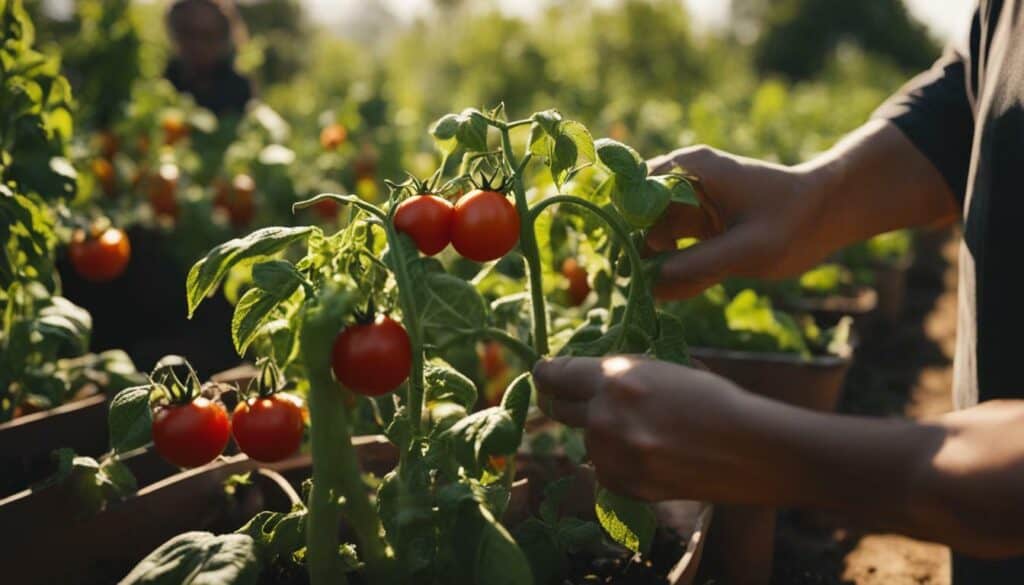
Now that you’ve learned how to protect your plants and perform regular maintenance, you’re well on your way to maintaining a thriving garden. Remember to stay vigilant against weeds and pests, and always be proactive in addressing any issues that arise. With dedication and care, your garden will reward you with beautiful blooms, bountiful harvests, and a sense of accomplishment.
Congratulations, you are now equipped with the knowledge to become a gardening master!
Put these tips into practice and watch your garden thrive with the green thumb you’ve developed. Gardening doesn’t have to be complicated; it’s all about planning, choosing the right plants, and providing them with the care they need.
Remember to consider your climate, soil type, and sunlight exposure when selecting plants for your garden. Lettuce and tomatoes are great options for beginners, but feel free to explore other varieties that suit your preferences and goals.
Having the right tools is essential for successful gardening. Make sure you have a shovel, hand trowel, bypass pruners, Hori Hori Knife, and gloves to assist you in your gardening tasks. These tools will make your gardening experience easier and more enjoyable.
When you find the perfect spot for your plants, with ample sunlight, good soil quality, and access to water, they will thrive. If your soil needs improvement, don’t worry. Adding compost or organic matter can enhance its fertility and structure, creating a healthy environment for your plants to grow.
Fertilizing your plants with a low-nitrogen, slow-release fertilizer is crucial for their overall health and growth. It provides the necessary nutrients without promoting excessive growth. Remember to water your plants according to their specific needs. Regularly inspect them for any signs of pests, diseases, or changes in condition, and address any issues promptly.
By following these gardening tips and techniques, you’ll not only enjoy the beauty of a flourishing garden, but you’ll also experience the stress-relief and mood-boosting benefits that gardening offers. So roll up your sleeves, dig your hands into the soil, and watch your garden blossom into a haven of natural beauty and abundance.
FAQ
Q: What are some beginner-friendly plants for my garden?
A: Lettuce and tomatoes are two suggested options for beginners.
Q: What are the essential gardening tools I need?
A: You will need a shovel, hand trowel, bypass pruners, Hori Hori Knife, and gloves.
Q: How can I find the best spot for my plants?
A: Ensure your plants receive full sun, have quality soil, and access to water.
Q: What should I do if I don’t have ideal soil?
A: Adding compost or other organic matter can help improve your soil.
Q: How should I fertilize my plants?
A: Use a low-nitrogen, slow-release fertilizer to provide the necessary nutrients.
Q: What are the proper planting and watering techniques?
A: Pay attention to the specific needs of each plant and water accordingly.
Q: How can I protect my plants from weeds and pests?
A: Regularly check for any changes in plant condition and address any issues promptly.
What Are the Basics of Square Foot Gardening?
Mastering square foot gardening basics involves growing plants in defined and precise square foot sections. By constructing a raised bed and dividing it into smaller squares, this method maximizes space and efficiently utilizes nutrients. Careful planning, proper spacing, and understanding plant requirements are crucial for achieving a thriving square foot garden.

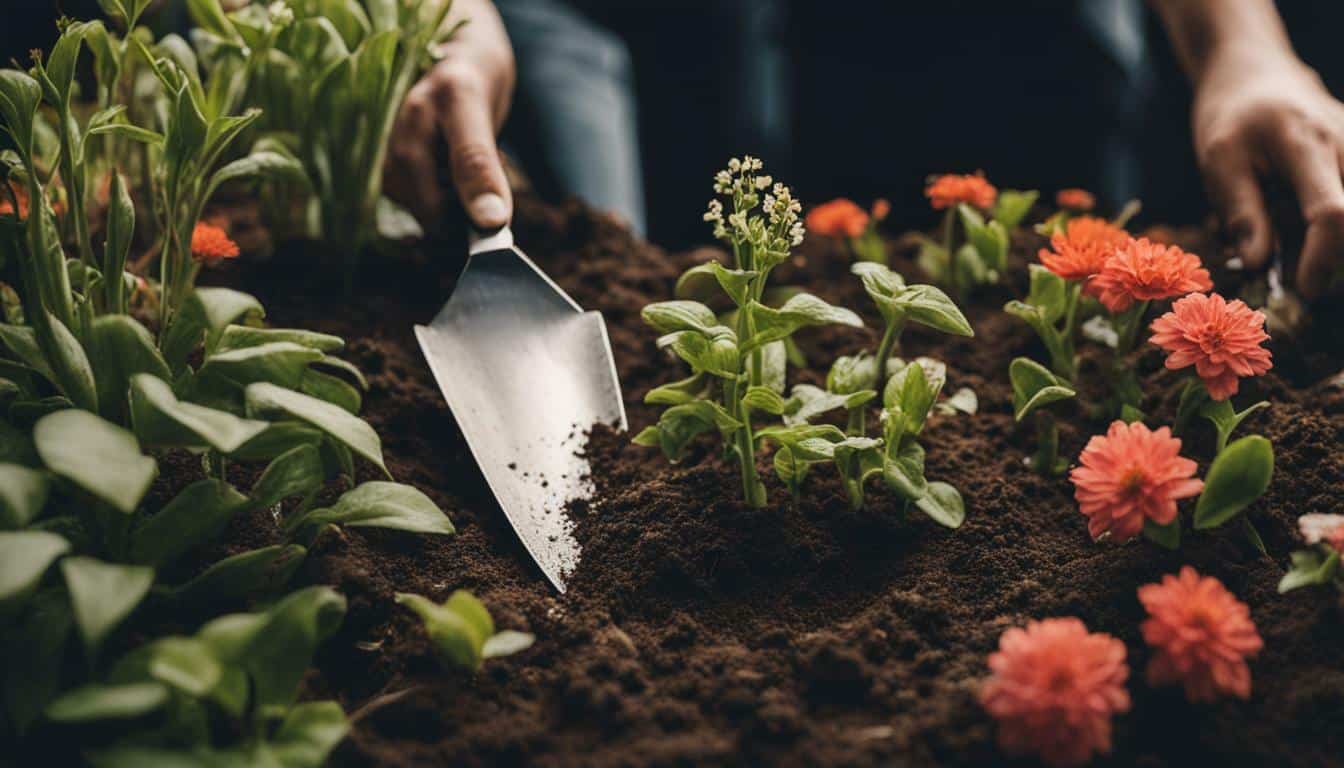



Leave a Reply